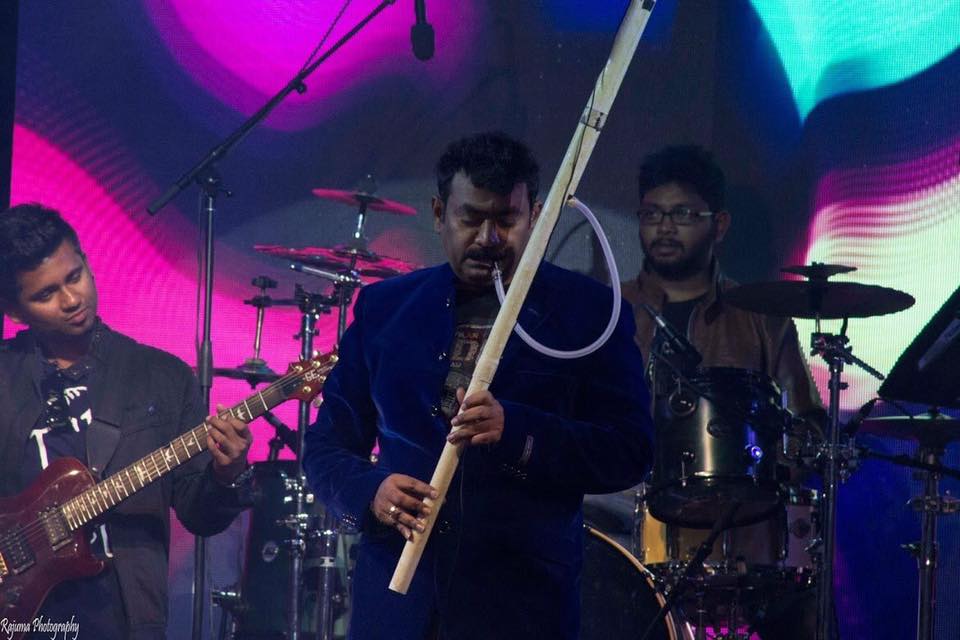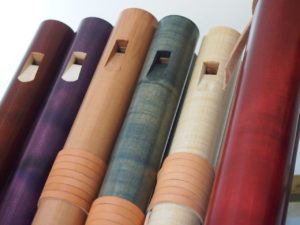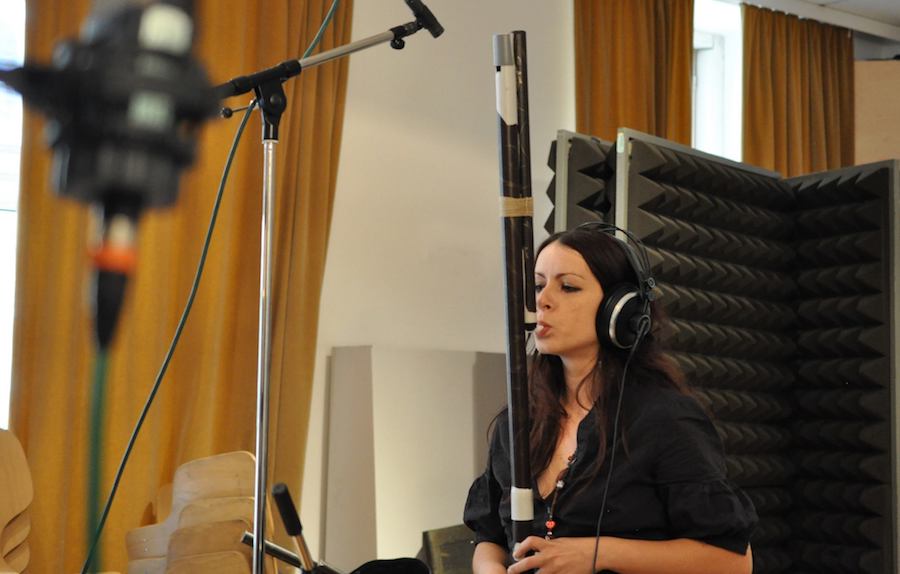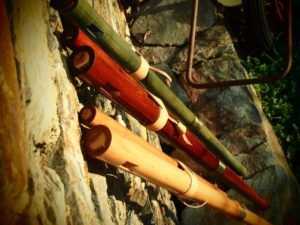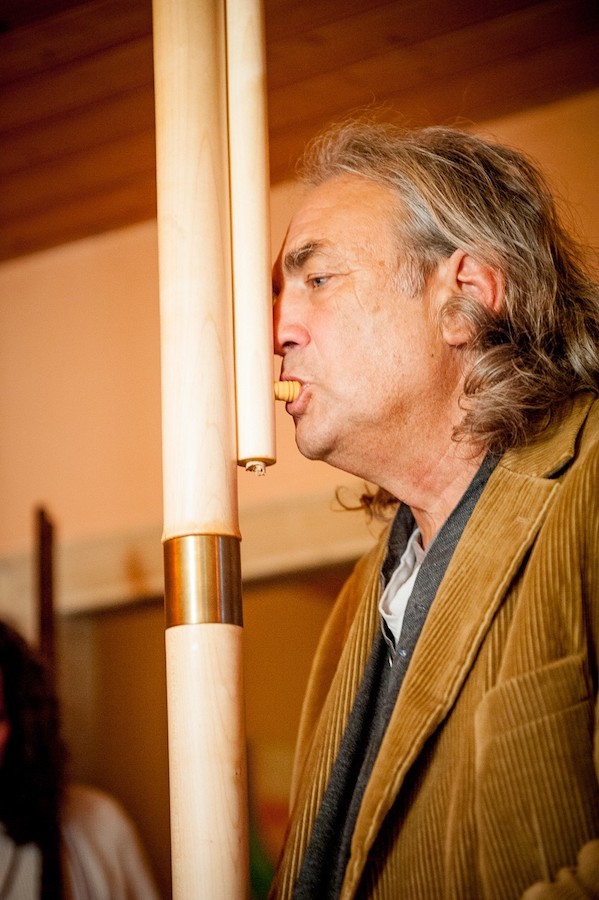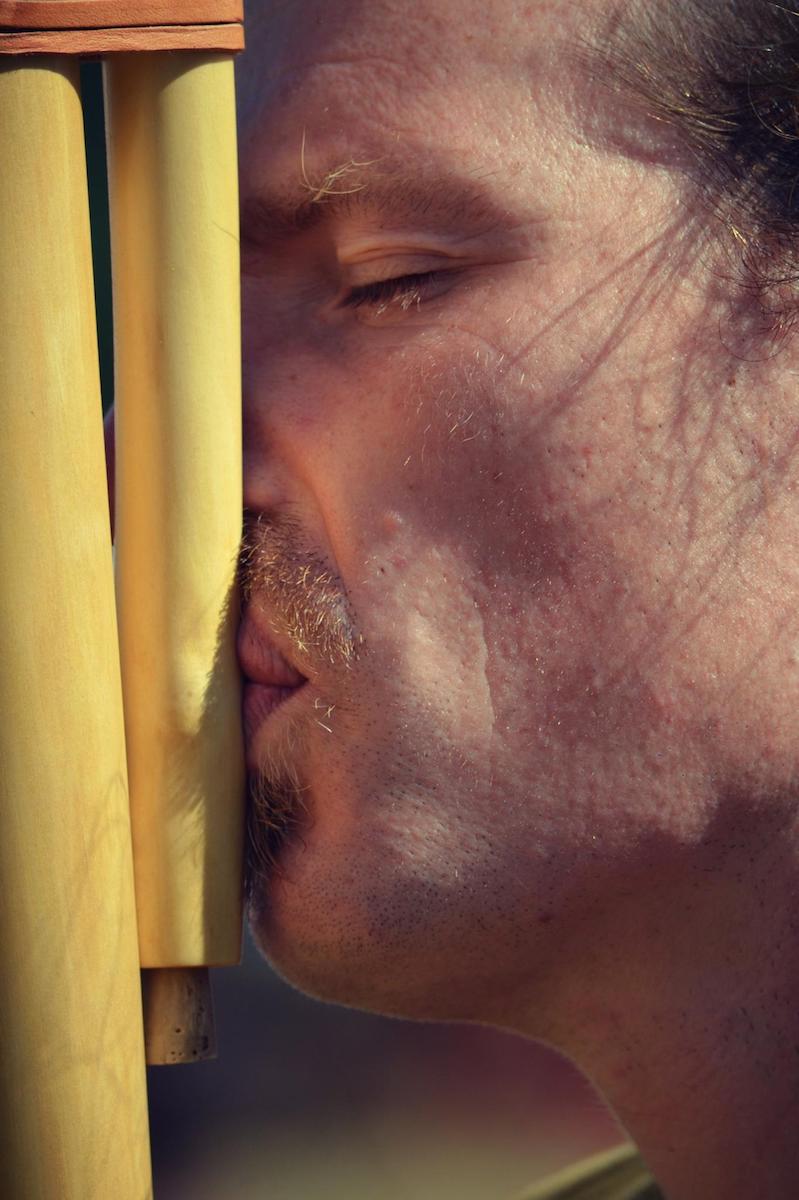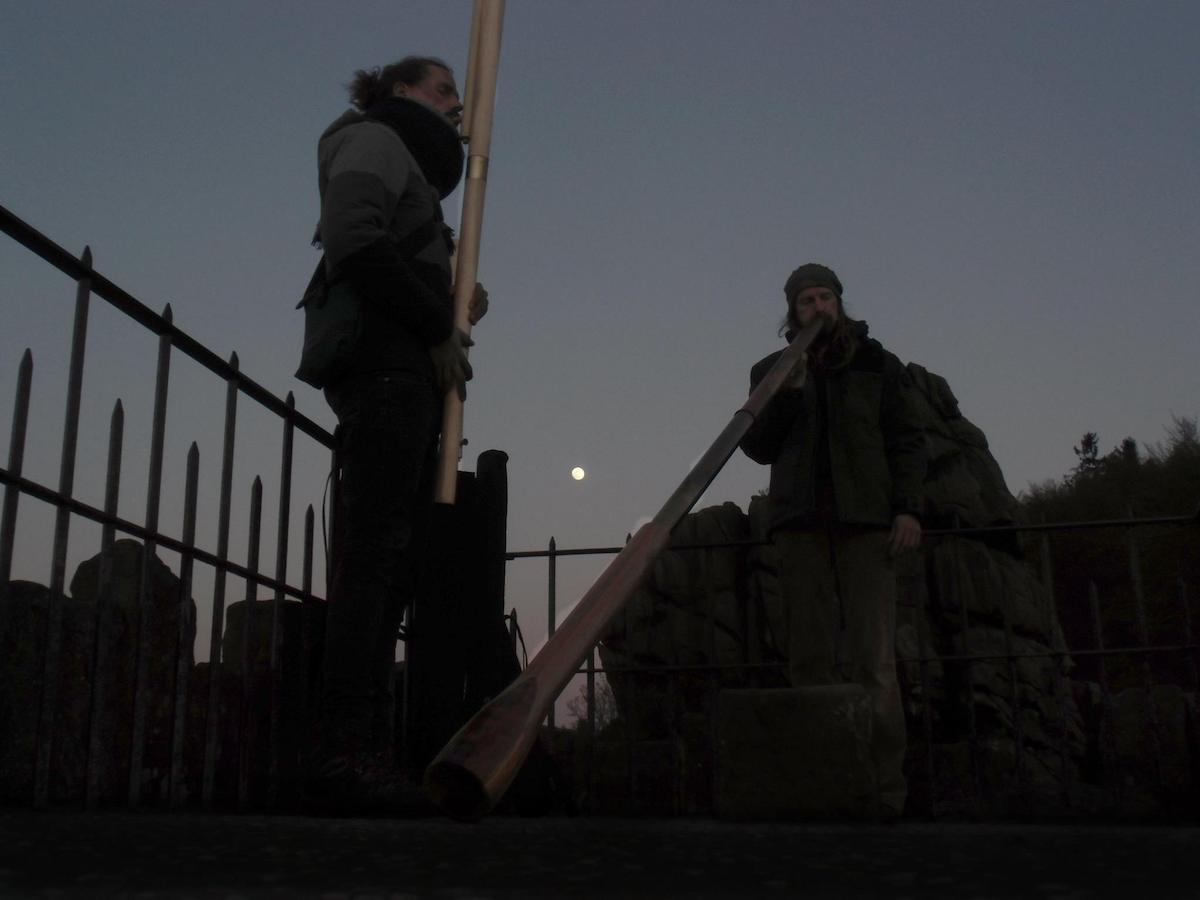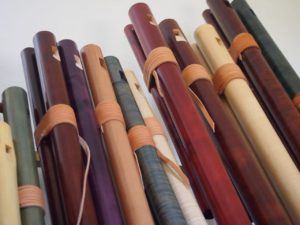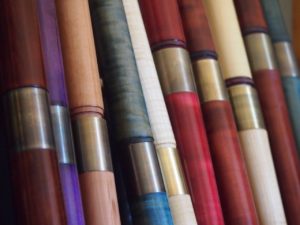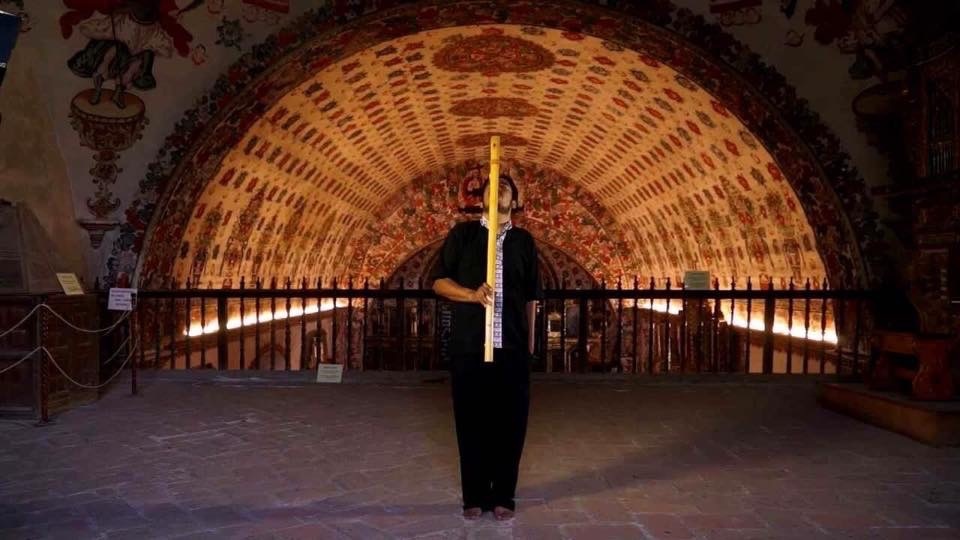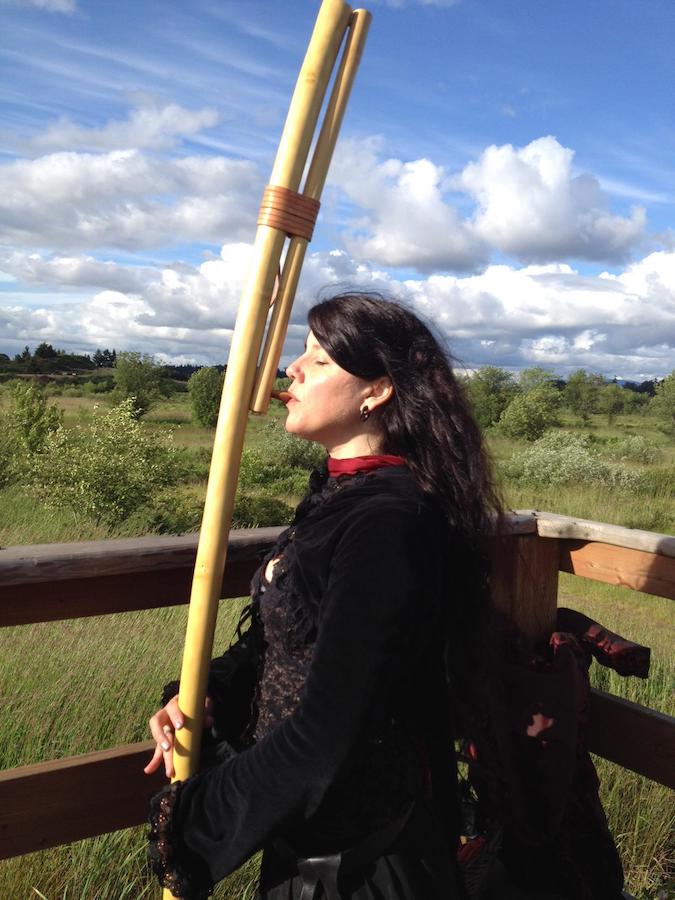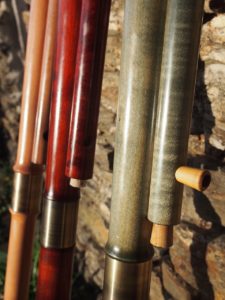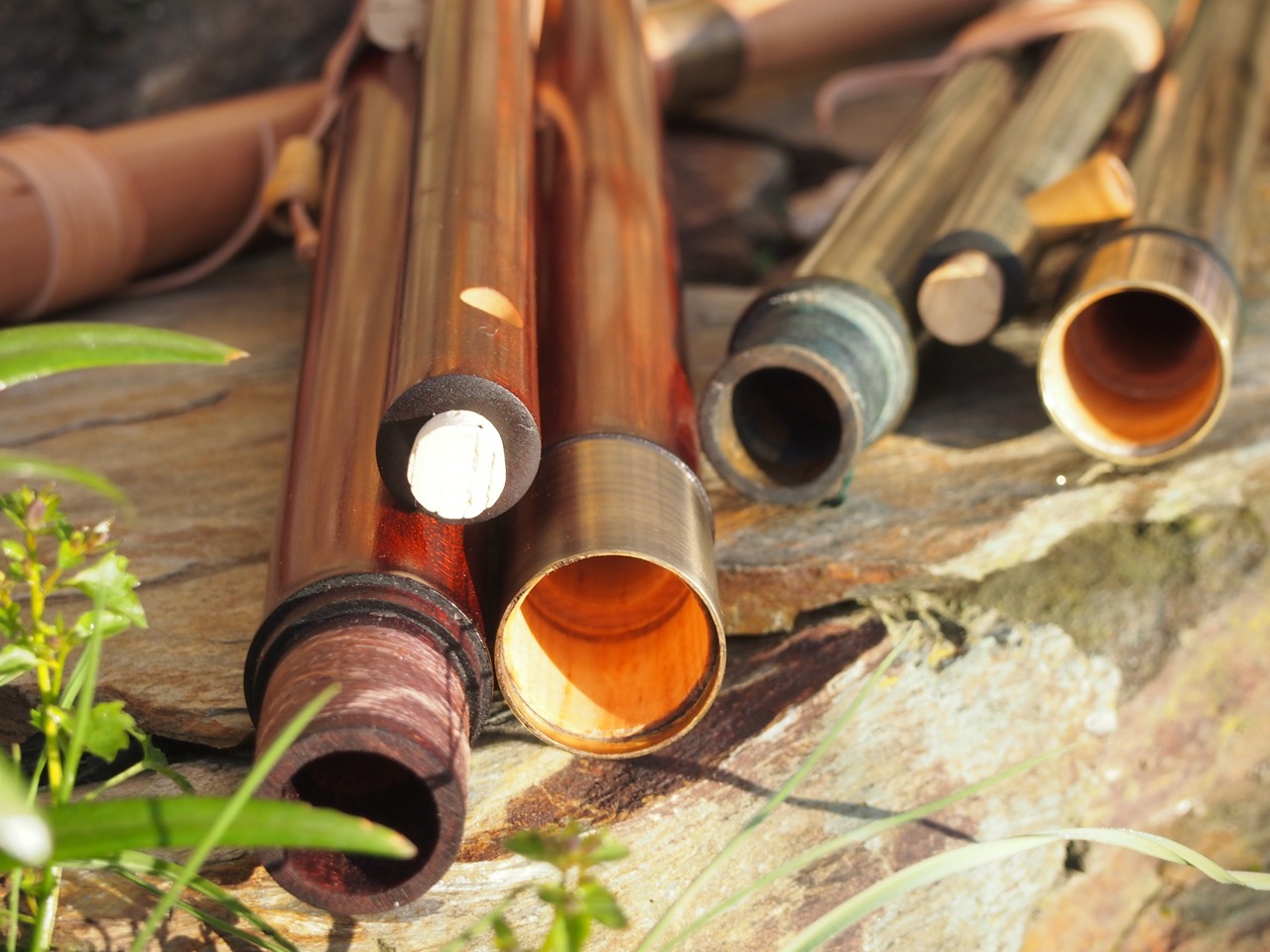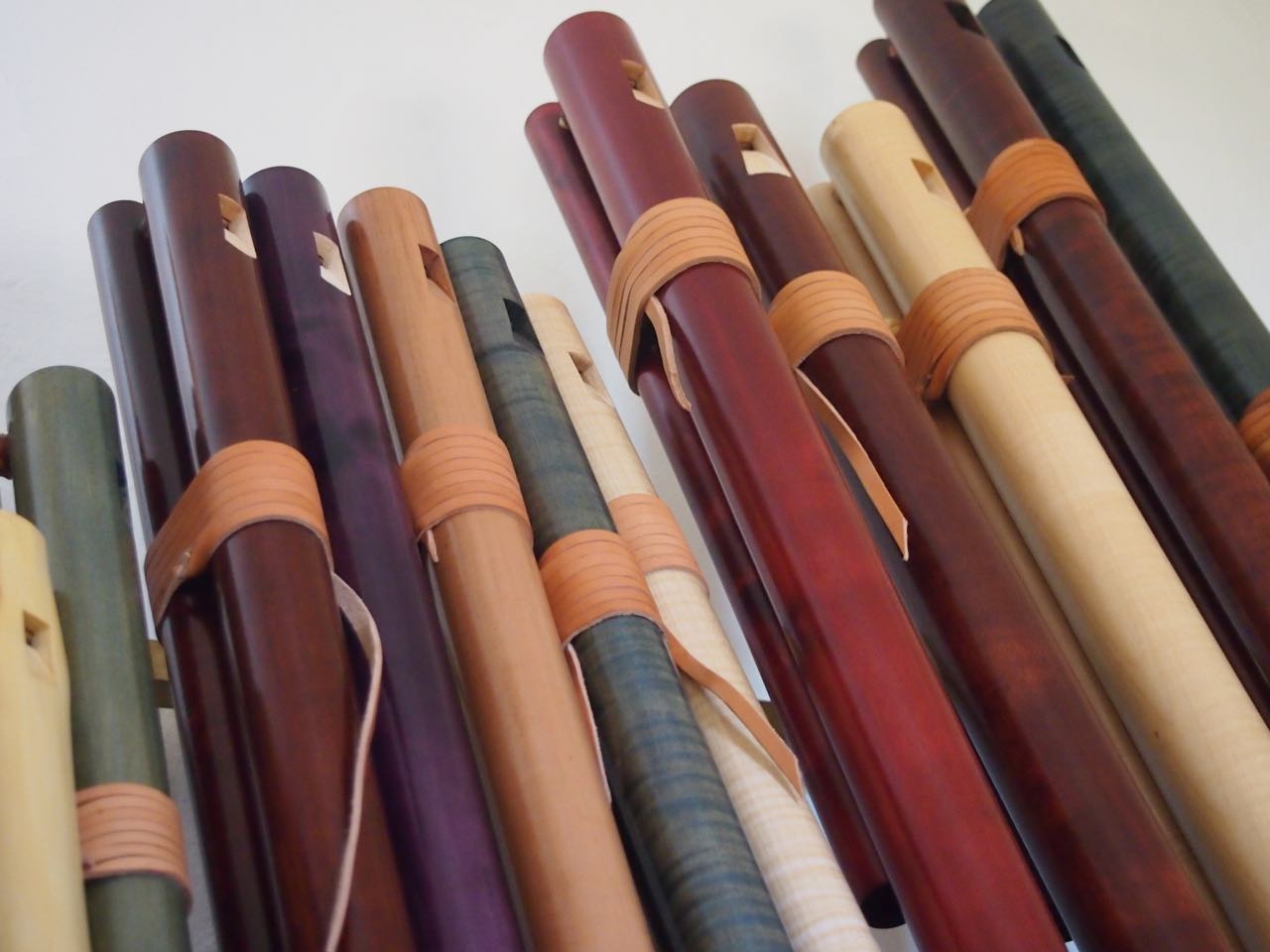The Queen of the overtone flutes with a length of up to 2 metres, played in a standing position. They have their origins in the three-hole bass flutes of the middle ages and have evolved further in the herdsman's traditions of Slovakia.
They have a wide range of tones from deep bass to high overtones. The groups of interacting overtones calm and fascinate the listener.
The Fujaras have three finger-holes and are in a major tuning (Ionian mode) although also occasionally Phyrigian. They make good use of the overtone scale, and as with the smaller overtone flutes, the harmonics are produced by over-blowing.
The smaller versions are also called 'Fujarka' (diminutive of Fujara).
In Slovakia the young Fujara players are sent out into the meadows to learn and listen, "to harken what nature tells them and hear what the Fujara says to them."
Through over-blowing using varying amounts of force the scale can be discovered by simple intuition. The scale of the naturally occurring tones and the multi-facetted sound of the individual notes create a pleasurable learning experience which encourages improvisation.
here you can find out about playing techniques: ( check out: Playing Fujara )
The fujaras made of one piece are made of elder wood (sambucus nigra).
Another option is the dismountable version coming in two sections, easily transportable. The Fujara is made of maple wood and available in various color stains.
Fujara in the tonality of A, length 1600mm
played in the Cueva de Hundidero in Andalucia,Spain
with Maxence des Oiseaux
Fujara in the tonality of E


